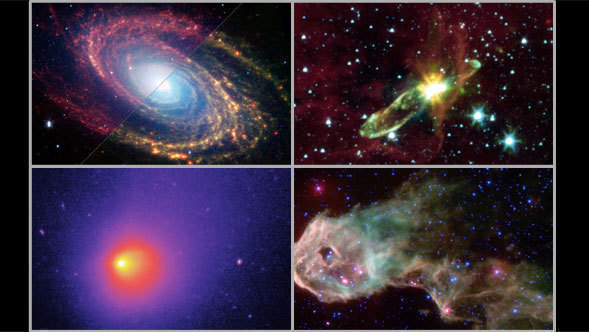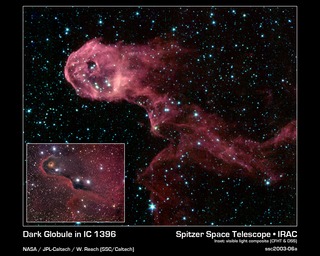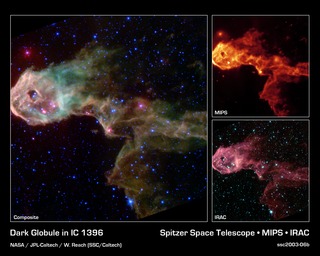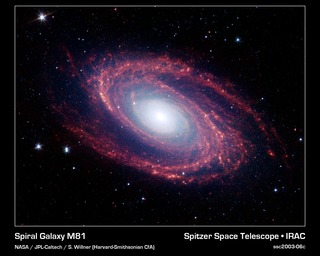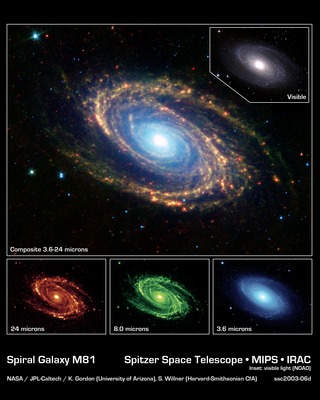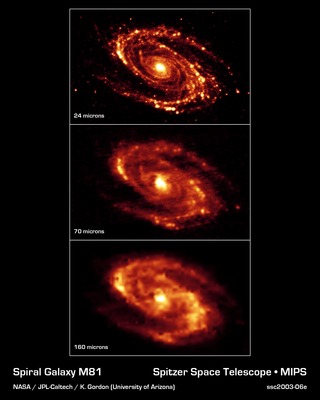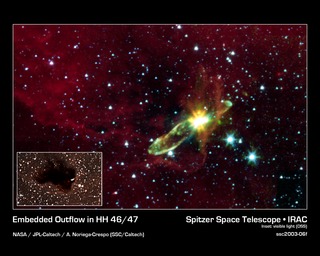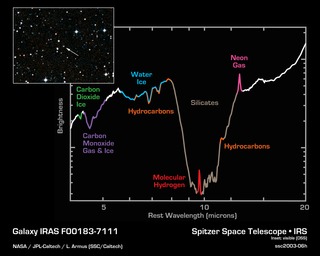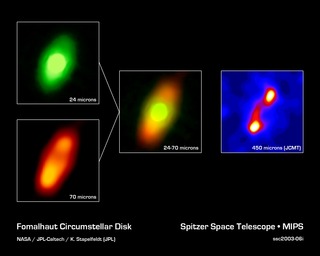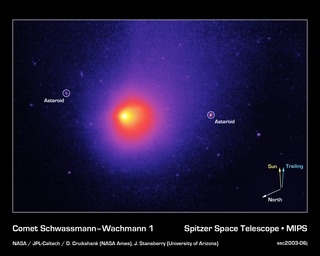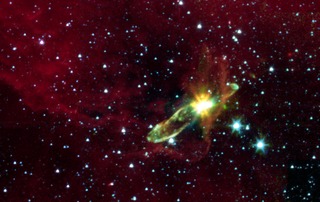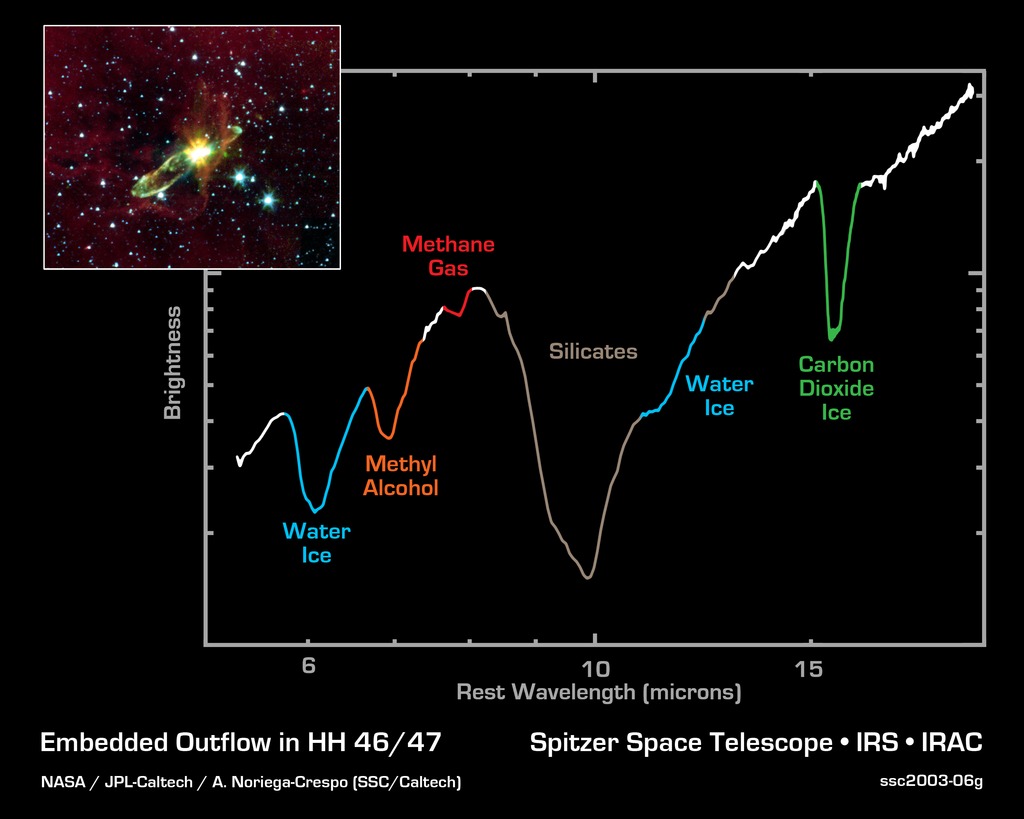
Credit: NASA/JPL-Caltech/A. Noriega-Crespo (SSC/Caltech)
Chart • December 18th, 2003 • ssc2003-06g
ssc2003-06g
NASA's Spitzer Space Telescope has lifted the cosmic veil to see an otherwise hidden newborn star, while detecting the presence of water and carbon dioxide ices, as well as organic molecules. Using near-infrared light, Spitzer pierces through an optically dark cloud to detect the embedded outflow in an object called HH 46/47. Herbig-Haro (HH) objects are bright, nebulous regions of gas and dust that are usually buried within dark dust clouds. They are formed when supersonic gas ejected from a forming protostar, or embryonic star, interacts with the surrounding interstellar medium. These young stars are often detected only in the infrared.
HH 46/47 is a striking example of a low mass protostar ejecting a jet and creating a bipolar, or two-sided, outflow. The central protostar lies inside a dark cloud (known as a 'Bok globule') which is illuminated by the nearby Gum Nebula. Located at a distance of 1140 light-years and found in the constellation Vela, the protostar is hidden from view in the visible-light image (inset). With Spitzer, the star and its dazzling jets of molecular gas appear with clarity.
The Spitzer image (inset) was obtained with the infrared array camera. Emission at 3.6 microns is shown as blue, emission from 4.5 and 5.8 microns has been combined as green, and 8.0 micron emission is depicted as red. The 8-micron channel of the camera is sensitive to emission from polycyclic aromatic hydrocarbons. These organic molecules, comprised of carbon and hydrogen, are excited by the surrounding radiation field and become luminescent, accounting for the reddish cloud. Note that the boundary layer of the 8-micron mission corresponds to the lower right edge of the dark cloud in the visible-light picture.
The primary image shows a spectrum obtained with Spitzer's infrared spectrograph instrument, stretching from wavelengths of 5.5 microns to 20 microns. Spectra are graphical representations of a celestial object's unique blend of light. Characteristic patterns, or fingerprints, within the spectra allow astronomers to identify the object's chemical composition.
The broad depression in the center of the spectrum signifies the presence of silicates, which are chemically similar to beach sand. The depth of the silicate absorption feature indicates that the dusty cocoon surrounding the embedded protostar star is extremely thick. Other absorption dips are produced by water ice (blue) and carbon dioxide ice (green). The fact that water and carbon dioxide appear in solid form suggests that the material immediately surrounding the protostar is cold. In addition, the Spitzer spectrum includes the chemical signatures of methane (red) and methyl alcohol (orange).
About the Object
- Name
- HH 46/47 • Herbig-Haro 46/47
- Type
- Nebula > Type > Star Formation
- Star > Evolutionary Stage > Protostar
- Star > Circumstellar Material > Outflow
- Nebula > Type > Jet
- Distance
- 1,140 Light Years
Color Mapping
| Band | Wavelength | Telescope |
| Infrared | Spitzer IRS |
